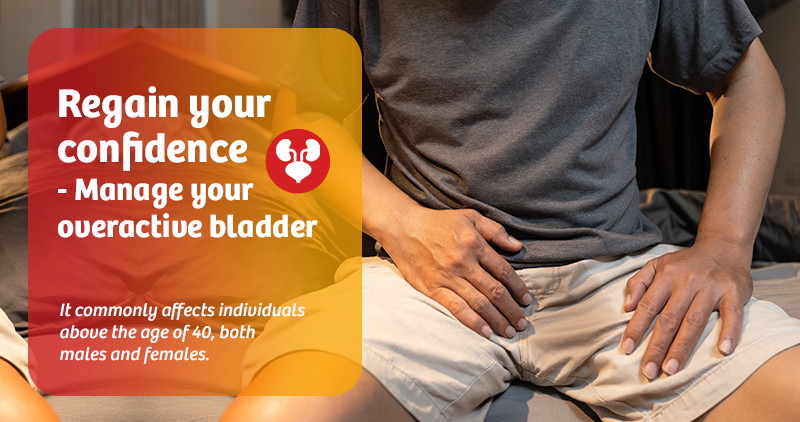

By Dr Darshil Shah
Consultant Urologist
Jan 08 , 2025
Overactive bladder (OAB) is a condition related to the urinary system. It commonly affects individuals above the age of 40, both males and females. It is the most prevalent yet serious condition that can lead to frequent urges to urinate and sometimes unintentional urine leakage. OAB can result from various factors, including infections, hormonal changes, certain neurological conditions, and medications. Sometimes, it may indicate an underlying issue requiring proper or targeted treatment.
Overactive bladder (OAB) is characterised by a range of symptoms that lead to a sudden or uncontrollable urge to urinate, which can progress to urinary incontinence. This condition is particularly seen in older adults and women, but it is more common in women. Increased sensitivity of bladder mucosa leads to urgency and incontinence. While OAB is not typically a serious health risk, it can be bothersome and lead to stress and discomfort over time.
OAB is not self-curable; it requires an evaluation to determine underlying causes. Lifestyle changes can help, but the condition may worsen if left untreated.
OAB may present a variety of symptoms, including:
Several factors may contribute to the development of OAB:
To diagnose OAB, healthcare providers may recommend various tests, such as:
There are several approaches to treating overactive bladder, including:
To help prevent OAB, consider the following strategies:
Best Urology Hospital in Gujarat.
Overactive bladder is a common condition affecting both men and women, particularly in older age groups. However, it is essential to address it properly. KD Hospital has a dedicated team specialising in urology and offers state-of-the-art facilities to assist with treatment.